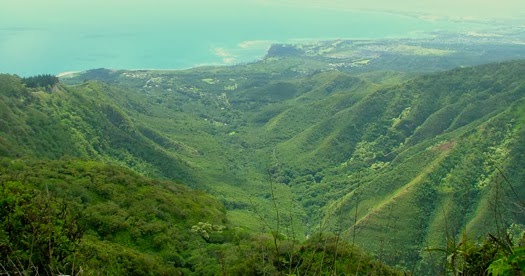In Europe, Great Britain defeated France in the Seven Years' War (1756-1763,) becoming the dominant power in Europe, North America and India. The war cost a lot of money; to raise funds Britain decided to levy taxes on the Colonies on the American continent.
For instance, the passed Quartering Act (required the colonies to provide barracks and supplies to British troops;) Stamp Act (taxed newspapers, almanacs, pamphlets, broadsides, legal documents, dice and playing cards;) Sugar Act (increased duties on non-British goods shipped to the colonies) and Currency Act (prohibited American colonies from issuing their own currency.)
This marked the beginning of Colonial opposition to the British (1765) and Colonists cried out against ‘taxation without representation.’
Turmoil was in the Islands, as well – some folks on Maui were also feeling that they were not being treated fairly; in addition, a power struggle was emerging.
Wailuku was considered a Royal Center (politically, ceremonially and geographically important during traditional times) with many of the chiefs and much of the area’s population residing near or within portions of ‘Īao Valley and lower Wailuku. (FWS)
The period immediately preceding contact with the Europeans was one of considerable upheaval and conflict. (FWS)
After the death of Kamehamehanui (the late king of Maui,, which happened about 1765, Nāmāhana (the widow queen of Kamehamehanui) married Keʻeaumoku. (Fornander)
Nāmāhana’s brother, Kahekili, then became King of Maui, was displeased that Nāmāhana had taken Keʻeaumoku for her husband, and he became Keʻeaumoku's enemy.
Nāmāhana and Keʻeaumoku lived at the large and fertile land of Waiheʻe.
Some people on Maui felt that the abundance of resources would have allowed all to be well fed; they felt they were not getting their share.
In particular, Kahanana (at the time, a lesser chief in Waiheʻe) was neglected by Keʻeaumoku and his court when the chief of Waiheʻe distributed fish, after fortunate catches, among the subordinates and warriors living on the land. (Fornander)
Kalākaua writes that “Kahekili induced Kahanana … to embroil Keʻeaumoku in a difficulty with his own people.”
One evening Kahanana killed three of Keʻeaumoku’s men. An insurrection arose and Kahekili, who was in the vicinity, took the side of Kahanana.
The resultant Battle of Kalaeʻiliʻili (c. 1765) was fought because the rich agricultural resources of the Waiheʻe River Valley and the offshore marine resources were being unevenly distributed by the chief Keʻeaumoku and other Molokaʻi chiefs.
A general fight ensued between the Kahanana party, being supported by Kahekili, and Keʻeaumoku. Keʻeaumoku and his chiefs maintained their ground for some days, but were eventually overmatched, beaten and obliged to flee. (Fornander)
The Battle reportedly marked the beginning of Kahekili’s reign and Keʻeaumoku and the Molokaʻi chiefs were driven out of Waiheʻe.
But the anger of Kahekili pursued the fugitives. Invading Molokaʻi, he engaged Keʻeaumoku and his Molokaʻi allies in a sea-fight and Kahekili was again victorious. The naval engagement off Molokaʻi is called the battle of "Kalauonakukui." (Fornander)
Keʻeaumoku fled to Hāna, where Mahihelelima, the governor under Kalaniʻōpuʻu, received him and his wife and entertained them at Kaʻuiki. (Fornander)
At Kaʻuiki, Keʻeaumoku appears to have found a short repose in his turbulent career; he was not heard of again for some years. It is probable that he made his peace with Kalaniʻōpuʻu and was permitted to remain at Hāna. (Fornander)
It was later, there at Kaʻuiki, Hāna, Maui, in about 1768, that Keʻeaumoku and his wife Nāmāhana had their first child, Kaʻahumanu, future and famous Queen of Kamehameha the Great.
Again, several years pass by with Kalaniʻōpuʻu still holding portions of the Hāna district on Maui and the great fort of Kaʻuiki; but about the year 1775, the war between Hawaiʻi and Maui broke out again. (Fornander)
Kahekili successfully defended his capital in Wailuku throughout the 1770s, until his defeat at the hands of Kamehameha’s forces. (FWS) (Kamehameha went on to conquer the Islands of Hawaiʻi, Maui Nui and Oʻahu by 1795 (defeating Kalanikūpule, Kahekili’s son) and ultimately ruled the island chain in 1810.)
Back on the continent, the discontent between the Colonists and the British Crown led to the American boycott of taxed British tea and the Boston Tea Party in 1773, and ultimately the American Revolutionary War (1775–1783) and then the War of 1812.
The image shows Waiheʻe Valley from Waiheʻe Ridge Trail. In addition, I have included other related images in a folder of like name in the Photos section on my Facebook and Google+ pages.
Follow Peter T Young on Facebook
Follow Peter T Young on Google+
© 2014 Hoʻokuleana LLC

No comments:
Post a Comment